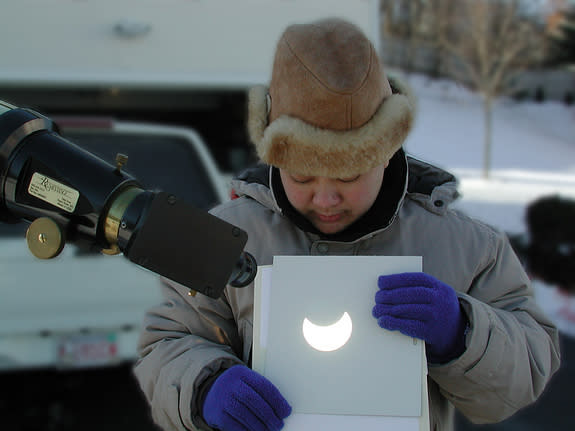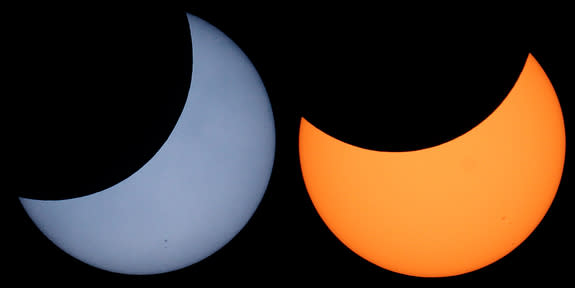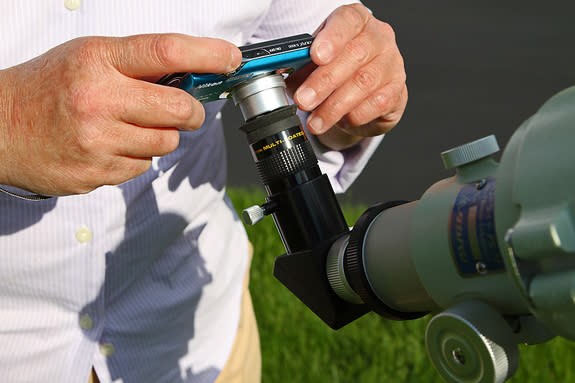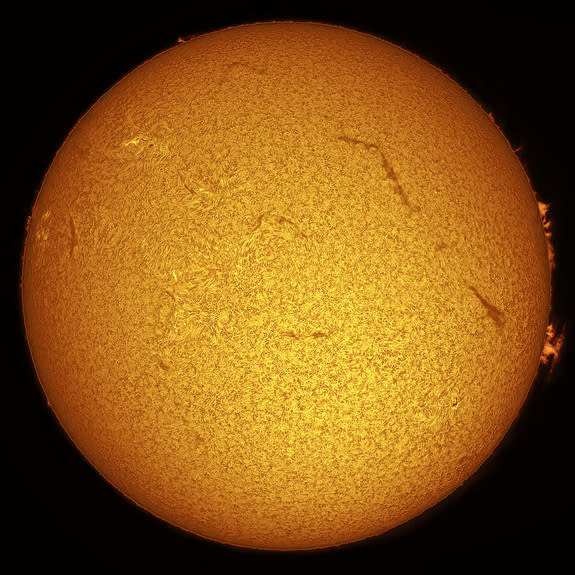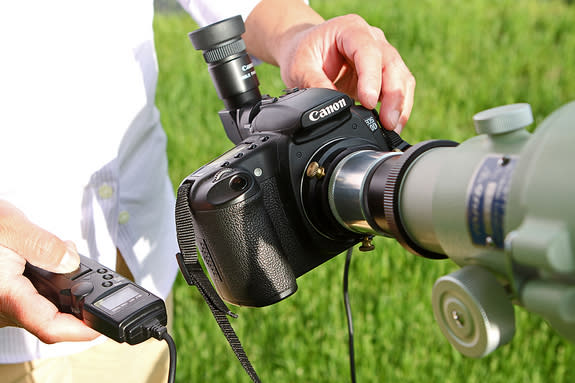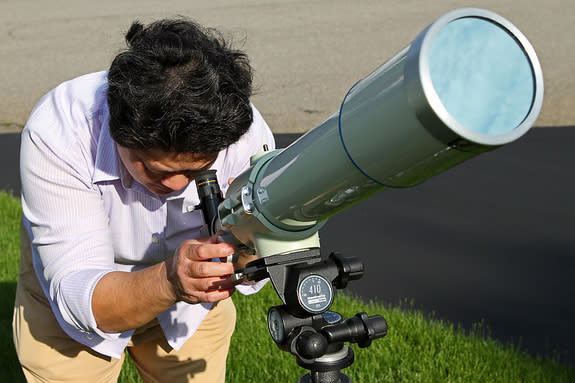Sunday Solar Eclipse: How to Safely Photograph the 'Ring of Fire'
UPDATE: For the latest tips and advice on seeing the May 20 solar eclipse, see: Annular Solar Eclipse of May 20: Complete Coverage
On Sunday, May 20, the western half of the United States will be treated to a spectacular annular eclipse as the sun sets in the western sky.
This 4 1/2-minute-long "ring of fire" as the moon blocks the sun will be visible to observers along a narrow track that stretches from Northern California to the Texas Panhandle.
The last time an annular eclipse was widely visible in the United States was May 10, 1994. After Sunday, the next one to be seen in the country won't occur until Oct. 14, 2023.
If you're planning to shoot this weekend's eclipse with a digital camera, particularly a digital single-lens reflex (DSLR) camera, here are a few pointers to increase your chances of success:
1. Use a proper solar filter: Never look at the sun with your naked eyes, or through a telescope, binocular or camera viewfinder without a safe solar filter. Failure to do so can result in serious eye injury or blindness. [How to Safely Photograph the Sun (Photo Guide)]
Use a No. 14 welder's glass filter, or purchase special solar filters from companies such as Thousand Oaks, Kendrick Astro Instruments, or Orion Telescopes & Binoculars, and fit them securely in front of your equipment.
2. Use a telescope or telephoto lens with a focal length of 400 millimeters or more: This helps to get detailed, close-up shots of the eclipse. This will give you a reasonably large image of the sun's disk in the frame.
3. Use a sturdy tripod or mount: Make sure your tripod and head are strong and stable enough to support your camera gear. Keep your setup as portable, light and easy to assemble as possible in case you need to relocate in a hurry to escape clouds.
4. Set the camera to its highest resolution: To record as much detail and color information as possible, use your camera's highest-quality (least-compressed) JPEG setting or "lossless" (uncompressed) image formats, such as TIFF or RAW.
5. Use a high ISO setting: Set your camera to ISO 400 (or higher) to keep exposures very short and prevent blurring from vibrations.
6. Switch to manual: Set your camera to "manual" (M) so you'll be able to control its focus as well as exposure and white-balance settings.
7. Focus carefully: Don't let poor focus ruin your images. If possible, prefocus your camera the night before the eclipse using a bright star. Otherwise, focus carefully on the sun's edge (or on sunspots, if some are visible). Place a piece of adhesive tape on your telephoto's focus ring (or lock the telescope focuser) to keep it from accidentally being moved during the eclipse. Be sure to recheck your focus as the eclipse progresses and refine it if needed.
8. Minimize vibrations: The mirror slap in DSLRs can cause blurred images. If possible, use the camera's mirror lock-up feature before each shot to keep vibrations to a minimum. You should also operate the shutter with an electronic cable release to eliminate camera shake. Lastly, choose an observing spot that is shielded from the wind.
9. "Bracket" your exposures: It's a challenge to determine the correct exposure beforehand, so shoot the eclipse at various shutter speeds.
10. Use a fresh battery: DSLRs can easily drain their batteries, especially if you use the LCD screen continuously. Make sure you have a fully charged battery right before the eclipse begins, and have a spare one handy, just in case.
11. Test your imaging setup: Be sure to try out your actual setup before the eclipse. This will reveal any potential problems with focusing and vibrations, as well as internal reflections or vignetting in the optics. Take some test shots of the sun to give you an idea of what exposure to use with your solar filter.
12. Try to shoot the sun in hydrogen-alpha: Unlike "white light," the plain, visible light from the sun, H-alpha is the red light given off by hydrogen atoms in the sun's atmosphere. A portable H-alpha telescope offers a wealth of stunning details of the sun at a wavelength of 656.3 nanometers.
13. Process your images: Since the camera's output is already in digital format, it's easy to enhance the images' brightness, contrast, sharpness and color balance using image-editing software such as Adobe Photoshop. You can also "stitch" the frames together to create a movie.
Shooting the Eclipse with Video
As with digital cameras, you need a proper solar filter over your camcorder when recording the sun.
Today's camcorders have zoom lenses with up to 40x (or more) optical magnification. To videotape the eclipse, simply mount the camcorder on a tripod and zoom in on the filtered sun to the lens's highest power. (Hand-holding the camcorder can result in shaky footage.) High-end camcorders have manual controls for adjusting the gain, f-stop and shutter speed so you don't overexpose the sun's disk.
Again, it is best to test your setup before the eclipse. On the day of the event, be sure to use a fully charged battery and bring a spare one as backup. Take two- to three-second clips every two to five minutes to produce a time-lapse sequence that compresses the eclipse's hourlong partial phase into just under a minute.
High-end DSLRs are capable of shooting HD video. (Check your camera manual.) In a pinch, you also can use your cell phone camera to shoot video (or still images) through a filtered telescope. Low-cost webcams can also be useful.
Good luck and clear skies on E-Day!
Imelda Joson and Edwin Aguirre are veteran eclipse chasers with nine successful expeditions to date (eight total solar eclipses and one annular).
Copyright 2012 SPACE.com, a TechMediaNetwork company. All rights reserved. This material may not be published, broadcast, rewritten or redistributed.

